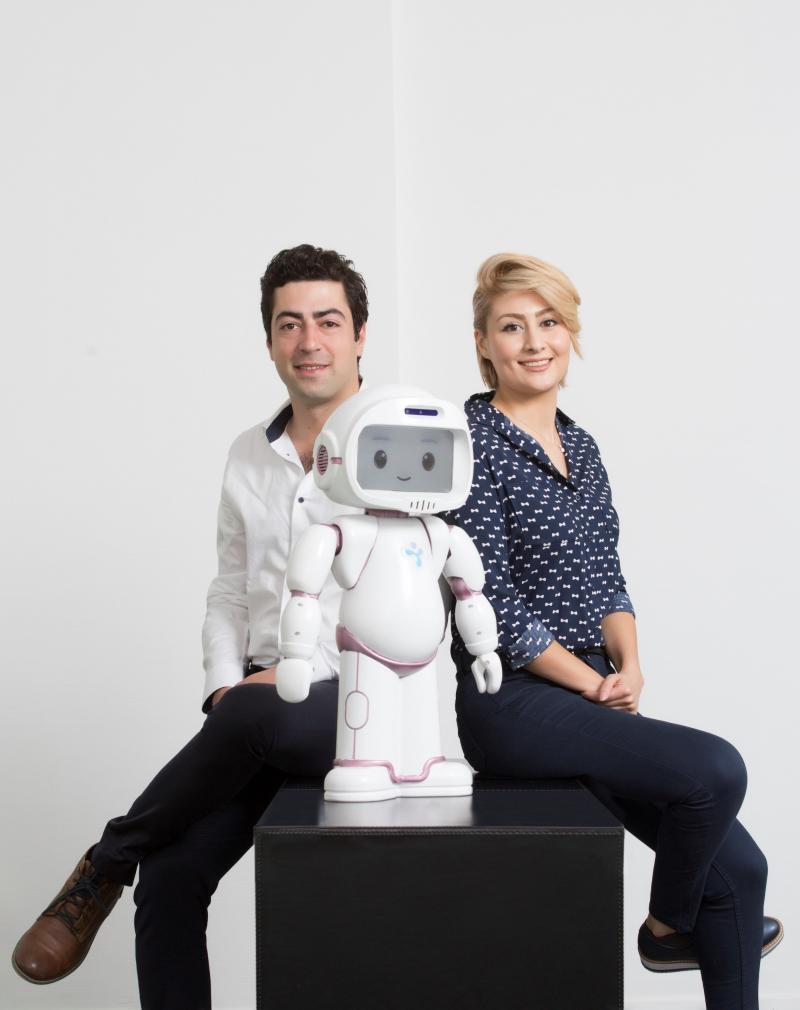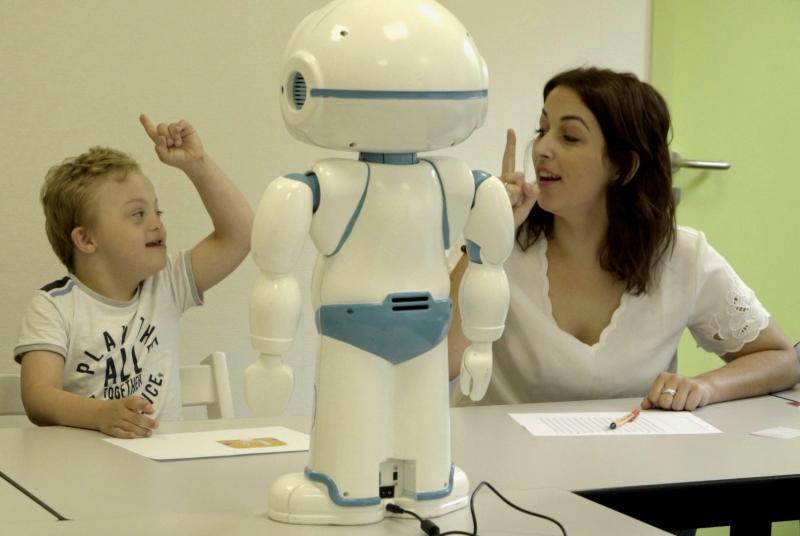Artificial intelligence education robot helps parents and therapists reach breakthroughs in social interaction
The robot, in a white helmet and moon suit, indicates a picture on a tablet and tells the little boy, “Look! My room is very messy. I cannot find my things. Please, help me to find my things.”
The boy sees three items from the room appear on his tablet: a ball, a TV, and some soap. The robot asks, “What do you play with?” The boy taps the ball, the robot raises his arms in triumph, smiles broadly and says, “You’re amazing!”
This table-top humanoid robot named QT (pronounced cutie) is helping a growing number of families with autistic children learn at home — with lessons on everything from managing emotions to learning to read.
“When we first decided to get an educational robot, we were unsure what to expect, but now we are thrilled we decided to get QT,” say Jay and Catherine, parents of a 6-year-old boy with autism who have been using the robot in Canada for more than a year. “It was QT who showed him how to wave hi, which we could not get him to do before then.”
Using technology to engage children with autism
QTrobot is made by a Luxembourg company, LuxAI. The company was founded by Aida Nazarikhorram, a medical doctor, and Pouyan Ziafati, whose specialty is artificial intelligence.
Aida had some experience working with children with disabilities through a non-profit organization that she had cofounded, and she knew that a growing number of children are being diagnosed with autism spectrum disorder. Her work had put her in contact with some artificial intelligence experts, and together they developed the idea of using a robot armed with A.I. to help parents and therapists reach breakthroughs with autistic children. QT was the result of their research and development.
“Often it’s difficult for children with autism to engage in social interaction that is aimed for teaching something, but they have a high tendency to prefer technology and get effortlessly engaged with it,” Aida says. “That’s mainly because technology is consistent, it’s predictable, it’s structured, and it’s non-judgmental, which is exactly what children with autism prefer.”
Also important, Aida says, is creating a triangular relationship among the child, the robot, and the parent or therapist. QTrobot comes with two tablets, one for the child and one for the teacher/parent, and a wide range of curricula.
“So if you have an activity that’s focused on social interaction and communication, QT will practice it a couple of times with the child, and then ask the child to practice the same activities with their human partner,” Aida says. “That way the child learns it’s not only a skill that they can use to interact with QT but also with other people around them.”
LuxAI was one of the winners of the 2018 Social Innovation Tournament, which is organised by the European Investment Bank Institute to promote creative responses to societal problems.

Aida Nazarikhorram (right), and Pouyan Ziafati, co-founders of LuxAI. (LuxAI)
Touching more lives
The company was spun off from the University of Luxembourg in April 2016, and QTrobot is the result of years of research, with both child development specialists, doctors, as well as AI and robotics experts. Part of the goal is to address the shortage of special education services worldwide.
“Autism is a very rapidly growing condition,” Aida says. “but unfortunately there’s a huge gap between the number of children who need support and the number of professionals who are able to provide it.”
LuxAI developed its first version of the robot in 2017 and eventually began selling it to research institutions, autism professionals and schools. Now LuxAI has developed an at-home version of the robot for families, at a lower price than the research version ($1,977 vs. closer to $10,000). Several hundred QTs have been sold and are in operation in more than a dozen countries.

QTrobot uses artificial intelligence to record and measure the effectiveness of lessons and adapt accordingly. (LuxAI)
QTrobot uses artificial intelligence to record and measure the effectiveness of lessons, increasing or decreasing difficulty based on the responses of the child, and gathering information to improve its efficacy. This also allows for an individualised approach.
For Aida, the reward has been having a bigger impact with her work.
“Before, as a clinician, I would just be able to support very few people,” she says. “But now we support a lot of people all around the world.”
More information on the QTrobot can be found on the company’s website, facebook and twitter.
